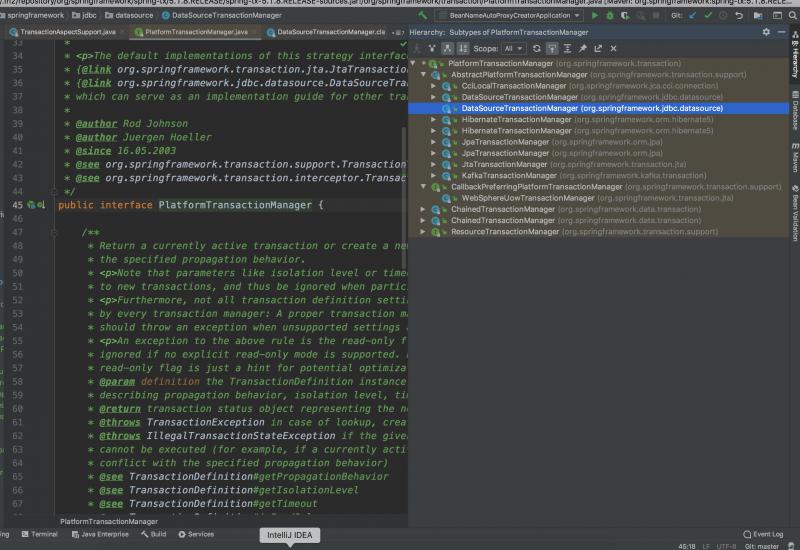
REPEATABLE_READ: A constant indicating that dirty reads and non-repeatable reads are prevented phantom reads can occur. READ_COMMITTED: A constant indicating that dirty reads are prevented non-repeatable reads and phantom reads can occur. READ_UNCOMMITTED: This isolation level states that a transaction may read data that is still uncommitted by other transactions. What are the Isolation Propagation levels ? And how you can set it ? not specified, the default propagational behavior is REQUIRED. This option is mostly not used in projects. If it gets an active transaction it will throw an exception.Įxecute non-transactionally, throw an exception if a transaction exists. Mostly those methods which run in a transaction but perform in-memory operations are the best candidates for this option. Indicates that the target method doesn’t require the transaction context to be propagated.Įxecute non-transactionally, suspend the current transaction if one exists. Methods which fetch data are the best candidates for this option. It supports everything, if it get an active transaction its good, if it doesn’t gets then also no problem. Difference between REQUIRED and MANDATORY is that the former will not throw an exception if it doesn’t get an active transaction, it will try to create a new transaction. If there is no active transaction then it will throw an exception. Indicates that the target method needs an active transaction. If an existing transaction is there it will suspend that. Indicates that the target method will always start a new transaction, immaterial if there is already an active transaction or not. If an transaction is already there it will run in the same transaction, if there is no transaction then it will run in a new transaction. What are the Transaction Propagation levels ? And how you can set it ? The Service is the best place for putting service layer should hold the detail-level use case behavior for a user interaction that would logically go in a transaction. Step 2: then annotate the class or method with : class FooService Where should we put the ? In Service or DAO Layer? transaction-manager default value is transactionManager but I am still having it to avoid confusion. transaction-manager attribute is used to provide the transaction manager bean name. Tx:annotation-driven element is used to tell Spring context that we are using annotation based transaction management configuration. Step1: We had to set the respective TransactionManager class in our ApplicationContext: How do you handle transactions in your application ?
Spring boot transaction management how to#

Spring boot transaction management password#
Spring Boot 3.x Security using Username Password.

Spring Boot 2.x Security using Username Password.Security Configuration in Spring Boot Apps.Spring Security with Form, Basic and JWT.XML configuration Vs Annotations configuration in Spring.Vs Vs How to read properties file in Spring.IoC Container Vs Application Context Vs Bean Factory.

How to avoid duplicate Employee objects in HashSet ?.Find the frequency of each character in a String.Deep and Shallow Copy in Java with examples.Print odd and even numbers using thread.


 0 kommentar(er)
0 kommentar(er)
